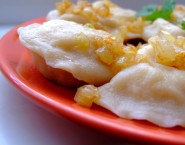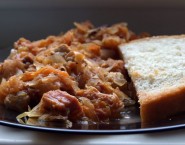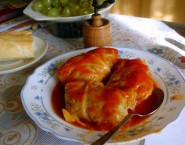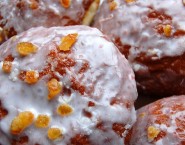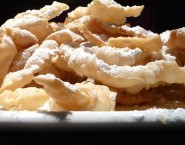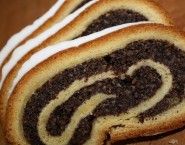Polish cuisine is varied and rich in flavors. Surely, during your holidays you will have many opportunities to taste traditional Polish food and local delicacies. Make sure you don’t leave Poland without trying at least some of the following:
Apetizers:
– kielbasa – Polish sausage as well as cold meats are very popular and one of Polish favorites.
– ogorki kiszone – Polish-style pickled cucumbers are commonly used as appetizers. The best ones are of course the home-made.
– oscypek – smoked cheese made of salted sheep milk is a regional product. It is produced by shepherds in Polish mountains and is a must taste when you visit Tatra mountains.
Soups:
– zurek [‘ʒurɛk] – Polish sour rye soup served with sausage and boiled egg, sometimes served in a bowl made of bread.
– barszcz czerwony [barʃʧ̑ ʧ̑ɛr’vɔ̃nɨ] – beetroot soup served with “uszka” – little dumplings stuffed with meat or mushrooms.
– flaki [‘flaki] – spicy Polish beef tripe soup is traditional and tasty, although its name meaning “guts” in Polish may be quite off-putting.
Main dishes:
– pierogi [‘pʲjɛrɔɟi] – dumplings stuffed with various fillings: cheese & potatoes, meat, mushroom & cabbage, sweet curd cheese, fruit, etc. It is definitely one of the best recognizable Polish food.
– gołąbki [ɡɔ’wɔmpki] – cabbage rolls stuffed with meat, served in tomato sauce. Other ingredients include groats or rice, onion and spices.
– bigos [‘bʲiɡɔs] – Polish hunter’s stew made from cabbage, diced sausage, dried mushrooms, onion and spices. Very traditional.
– kotlet schabowy [‘kɔtlɛt sxa’bɔvɨ] – Polish pork schnitzel is one of the most popular and usual dinner dishes in Poland. It is a pork cutlet in a coating, served with potatoes and vegetables.
– placki ziemniaczane – potato pancakes is a simple dish made from grated potatoes fried in fat. Usually, they are served with sugar or jam. A bigger version served with meat, beef sauce and vegetables is called “placek po zbójnicku” (brigand’s pancake).
Desserts and sweets:
– pączki [‘pɔ̃n͇ʧ̑ki] – Polish donuts are one of the most typical pastries and most favorite. They are round deep-fried pieces of dough filled with jam, pudding or other sweet filling, served covered with powdered sugar, icing or bits of dried orange peel. A singular form of “pączki” is “pączek” [‘pɔ̃n͇ʧ̑ɛk].
– sernik [‘sɛrʲɲik] – cheesecake with dried fruit, raisins and/or crumble topping can be made in different ways; baked in the oven or prepared without baking. It is made of sweet curd cheese; served hot or cold.
– piernik [‘pʲjɛrʲɲik] – gingerbread is a dark hard aromatic cake. It comes in a form of a big piece of cake or small tasty cookies.
– sekacz [‘sɛ̃kaʧ̑] – tree cake is a regional delicacy from Podlasie region. It owes its name to its characteristic appearance and light and dark layers resembling growth rings of a tree trunk (“sęk” means “knot” in Polish).
Drinks:
– kompot [kɔ̃m’pɔt] – compote is a drink made in summer from fresh fruit and sugar. It is served cold and is a common drink during dinner in Polish homes.
– wodka [‘vutka] – vodka is known as Polish national alcohol. Although its consumption has been decreasing, it is still quite popular and comes in many varieties.
– piwo [pʲivɔ] – beer is the most popular and favorite alcoholic drink in Poland. Brewing traditions here date back to medieval times. Nowadays, numerous local micro-breweries produce multitude of different types of beer.
– nalewki [na’lɛfki] – liqueurs made of fruit, spices or herbs are the stronger drinks. They have distinctive taste and are perfect aid to digestion.
– miod pitny [mʲjut pʲitɲi] – mead is traditional Polish alcohol produced by fermenting a solution of honey and water. It may be flavored with spices and herbs.
